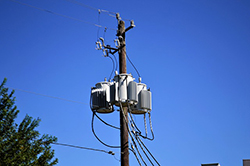When buying a home, one with walk-in closets, a big kitchen, a big yard, or other attractive features is nice, but even the best features are a moot point if the physical condition or legal status of the home is problematic. Many potential buyers are completely confused when it comes to knowing what information on known material facts of a property must be disclosed by the seller.
Details about the legal status or physical condition of a home are called material facts. These details are often issues that aren’t obvious to a potential buyer just from looking at the home. For example, a legal status issue could stem from an ownership rights claim on the home by an ex-spouse of the seller or a structure built by a neighbor on the property line (encroachment). Whereas, physical conditions might include a leaking roof, termites, or foundation crack.
Much of the confusion regarding property disclosure is due to the fact that the law regarding property disclosure isn’t uniform. Most states do require a property disclosure form be completed by any homeowner attempting to sell their home. However, the law greatly varies by state as to what legal and repair issues must be disclosed by law. Real estate agents are an excellent source to find out what types of disclosures are legally required by the state the home is being sold in.
Typical property disclosures would inform the buyer of the following issues:
- Leaking roof or foundation walls
- How old shingles and roofing materials are
- Mildew or mold damage
- Termite damage
- Sewer and septic system issues
- The square footage of the home
- Property taxes
- Any person with a pending property claim
- Any road plan that will subtract at least 10 feet from the front yard of the property
- Any structure on the property for sale that also falls on an adjacent property
- A home that’s in the flight path of the local airport
- If any gas or oil tank is buried in the property
After the home inspection is complete, the home inspector will provide the potential buyer with a written report detailing the inspection results. This usually takes about 15 days post-inspection to receive. It’s important that a buyer allots enough time in their purchase offer to review the inspection report thoroughly.
The buyer might want to consider negotiating with the seller to pay for part of the repairs before closing if the report unveils too many problematic areas. When negotiation fails and/or the buyer feels the home is unfairly priced, the purchase can be canceled. If the offer of purchase included a time frame by which the buyer retains the right to back out of the deal, there usually isn’t a cancellation penalty if the purchase is canceled within the specified time frame.
As one last assurance that this is the right home, walk through the property about five days prior to closing to ensure that negotiations have been followed through with or that the home is in the agreed upon condition. Keep in mind that unless specified in the purchase offer, the seller can refuse a final walk through.


 In early September, the credit reporting agency Equifax announced a significant data breach. Hackers were able to access the names, birth dates, Social Security numbers and addresses of 143 million consumers, which put their identity and credit at risk. A credit report freeze is one protective measure Equifax recommended. Every consumer, including you, should understand this protective measure as you protect your data, identity and credit.
In early September, the credit reporting agency Equifax announced a significant data breach. Hackers were able to access the names, birth dates, Social Security numbers and addresses of 143 million consumers, which put their identity and credit at risk. A credit report freeze is one protective measure Equifax recommended. Every consumer, including you, should understand this protective measure as you protect your data, identity and credit. Power outages can occur during storms or because of accidents or blackouts. The next time you experience a power disruption, take these steps to protect your home, valuables and family.
Power outages can occur during storms or because of accidents or blackouts. The next time you experience a power disruption, take these steps to protect your home, valuables and family. To make extra money, look no further than your vehicle. Your car or truck can become a source of income even if you’re not behind the wheel.
To make extra money, look no further than your vehicle. Your car or truck can become a source of income even if you’re not behind the wheel. Spring officially starts on March 20. In addition to rising temperatures and longer daylight hours, melting ice, snow and the ground produce a winter thaw. Take several steps as you prevent water damage to your home.
Spring officially starts on March 20. In addition to rising temperatures and longer daylight hours, melting ice, snow and the ground produce a winter thaw. Take several steps as you prevent water damage to your home. Your home’s pipes deliver water to the kitchen and bathrooms. These pipes could freeze during harsh cold winter weather, though, and leave you without water for meals, showers and other activities, which affects your health and wellbeing. Take several steps to prevent frozen pipes, and know how to thaw frozen pipes properly as you protect your home and family this winter.
Your home’s pipes deliver water to the kitchen and bathrooms. These pipes could freeze during harsh cold winter weather, though, and leave you without water for meals, showers and other activities, which affects your health and wellbeing. Take several steps to prevent frozen pipes, and know how to thaw frozen pipes properly as you protect your home and family this winter. Safety remains your first priority as a parent. Whether you have one or a dozen kids, follow several car seat safety tips and protect your growing family.
Safety remains your first priority as a parent. Whether you have one or a dozen kids, follow several car seat safety tips and protect your growing family. Winter is almost over, but a variety of risks affect your safety as you drive. This month, perform a maintenance check on your vehicle as you improve safety and reduce
Winter is almost over, but a variety of risks affect your safety as you drive. This month, perform a maintenance check on your vehicle as you improve safety and reduce 





